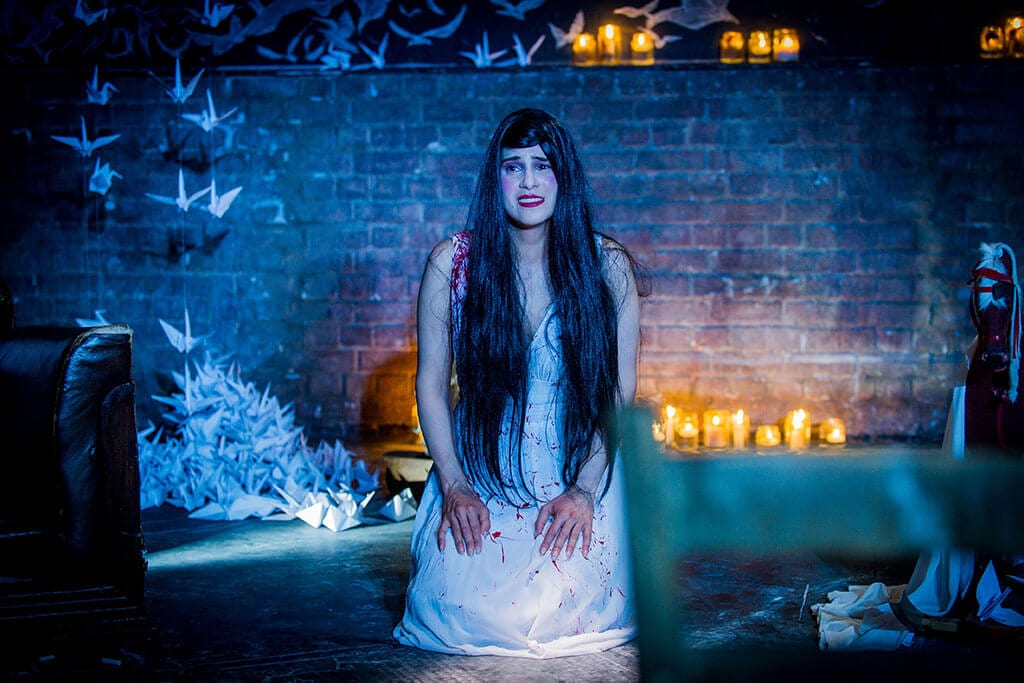Burbach’s new production of Madama Butterfly draws on traditional Japanese ghost stories to ‘radically reframe’ the opera. The result is haunting on several levels.
As we take our seats, the ghost of Butterfly, in a blood-spattered white gown, is chalking patterns around the outline of her own dead body. This is a crime scene long before the story unfolds.
Dawson’s set is stunning. Candles flicker in jars, origami cranes and paper lanterns twist slowly on strings and Butterfly sets a rocking horse going, so that it soon seems to move of its own accord. Seemingly animate objects are of course, staples of any ghost story.
The lights gutter and brighten as we shift between the perspectives of the child Butterfly, full of naïve hope, and her bitter ghost, who circles the other characters. They freeze their poses or enact scenes in slow motion whenever her ghost appears. These transitions are also signified by her rejection of her butterfly-patterned kimono: her wings have been torn off just as Pinkerton anticipated.
Akins gives a self-assured performance as Pinkerton with a warm and powerful range. He is suitably patronising and entitled at the opening, and genuinely moving in his remorse. Tong’s Bonze commands the stage during his brief appearance and Brynmore John is a heart-breaking Sharpless with a mellow, rich baritone. The intimacy of the performance space exposes Jouhl’s overly demonstrative acting which is more appropriate to a larger stage. However she more than makes up for this with her vocally sensitive, haunting delivery. She sings with light tenderness and fierce emotional intensity in just the right places.
Paul Wingfield makes the opera sound as though it were written for piano, rather than the orchestra he is single-handedly replacing. The cast remain frozen on stage during the interlude between acts two and three. His captivating performance demands the audience’s attention not only throughout interlude, but the whole performance.
Burbach not only draws on traditional ghost stories but uses imagery and specific poses from contemporary Japanese horror films. Butterfly’s dress and trailing black wig, as well as her crouched, and contorted body language, are familiar to anyone who has seen Ju-on (The Grudge) and Ringu (The Ring). Her make-up clearly merges geisha aesthetics with the red eyeshadow of the heroine in Sympathy for Lady Vengeance (which, though not technically a ghost story, echoes themes from the opera). The production is haunted by modern and traditional versions of the ghost stories, just as Butterfly haunts her younger, past self.
Both visually and musically stunning, this highly allusive version of Madama Butterfly is well worth watching.

